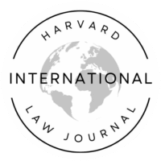Olivier De Schutter’s The Green Rush: The Global Race for Farmland and the Rights of Land Users discusses how the conquest for arable land affects the local population in countries on the sell side of these transactions. He suggests three possible scenarios that may result from these transactions and explains why his reform proposal is superior to the others both on humanitarian and environmental grounds.
In these remarks, I will briefly summarize the main contributions of Professor De Schutter’s article. I will suggest that all three scenarios assume, at least implicitly, that the transactions can be explained in terms of simple market-based supply-and-demand models that reflect increasing food prices fueling a greater demand for land, filled by countries that have an excess of arable land and a need for foreign direct investment. Professor De Schutter suggests that there are costs involved with this model – indeed he points to classic externalities: those currently occupying or using the land – typically small peasant holders, herders, indigenous people and other marginalized groups that do not have much of a voice – will be dislocated. In addition, these transactions push towards large-scale agriculture, which is not necessarily the most environmentally sustainable form of land cultivation.
In my comments I would like to emphasize some points that may not be fully accounted for in this supply-and-demand scenario.
First, while the hunt for arable land for food may explain many of the large transnational land deals, they appear to be part of a deeper structural change – the emergence of a transnational real estate market. What explains this change?
Second, if the supply/demand story was sufficient for explaining transnational land deals, we should observe primarily countries with excess land getting into this market on the sell side. However, available data on transnational land deals suggest that many more countries are selling. Why is that? Conversely, on the buy side we should observe countries that cannot meet their current or future demands on world markets. However, this does not appear to be the case either. While many of the origin countries of major land acquirers – most of which are private – may face fuel or food shortage in the future, many other countries share that too, and yet they, or rather investors from their countries, are not buying land to meet those demands. So who is buying and why?
Finally, supposing that scarcity of arable land is indeed at the bottom of the “Green Rush,” then the relevant policy question is whether the market mechanism – even in the modified version that Professor De Schutter advocates, which makes land occupied by marginalized groups essentially nontransferable – is indeed best suited for dealing with the problem of scarcity of this particular good.

